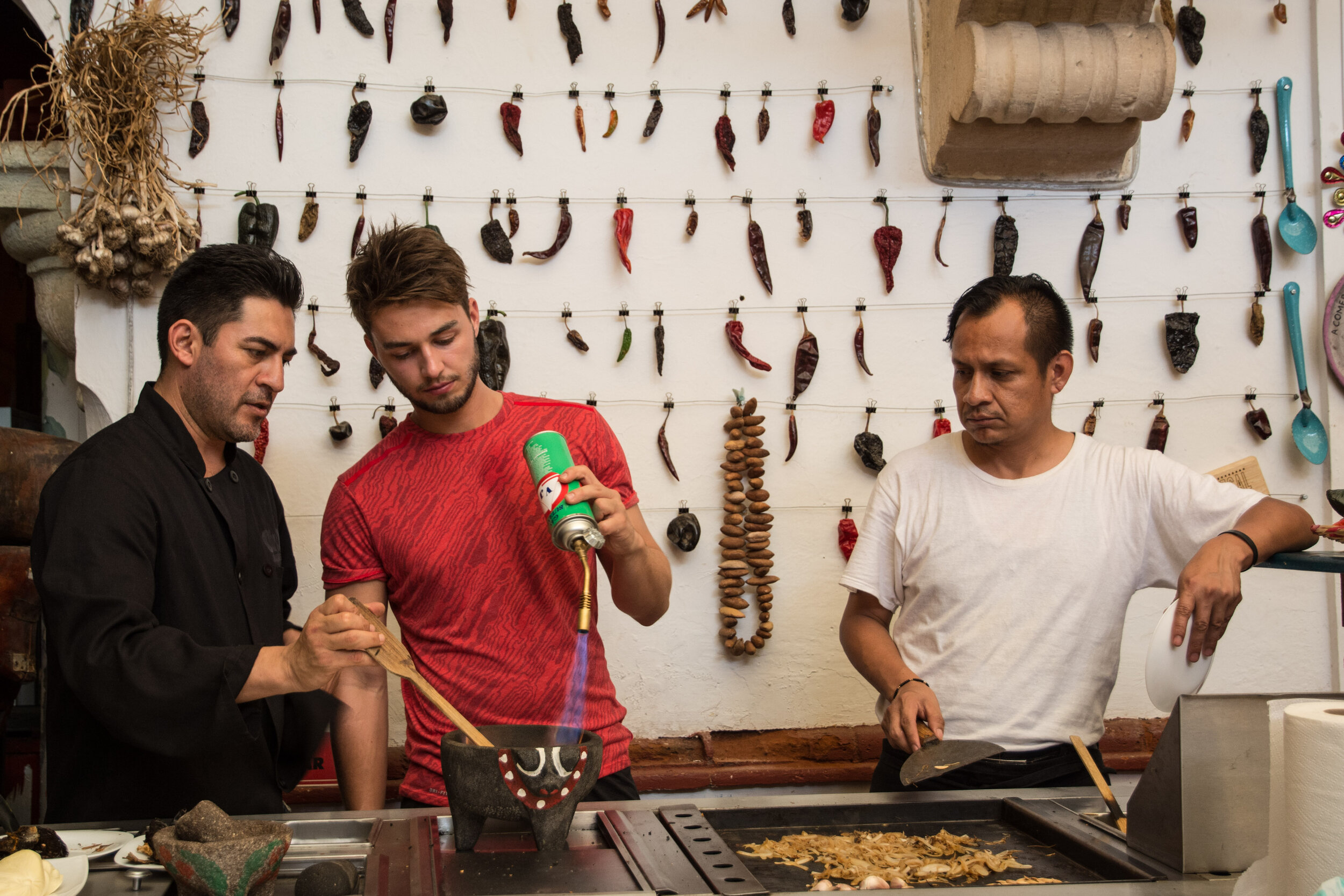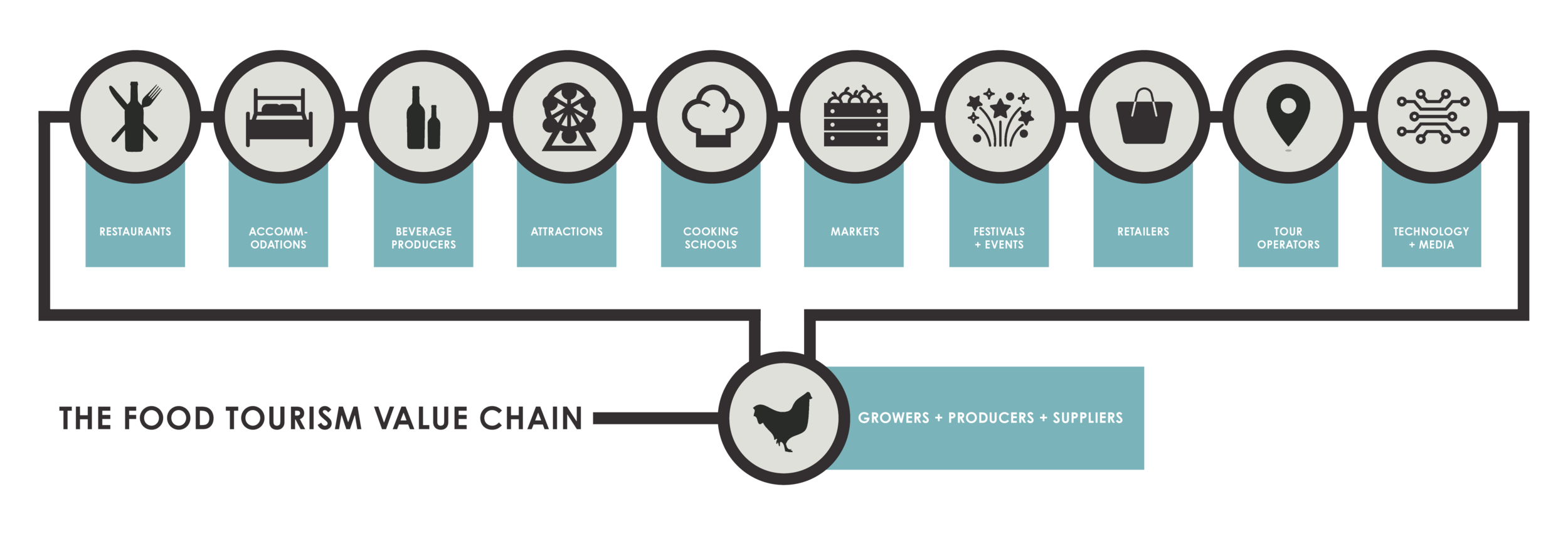
What is
Culinary Tourism?
Culinary tourism includes the active pursuit of unique and memorable eating and drinking experiences, as well as agritourism experiences that connect what is being grown and produced in an area to what is being prepared and enjoyed by locals.
The important thing to remember is that food and drink can enrich virtually any tourism experience.
Food tourism development is the process by which a destination seeks to maximize the economic potential of its local food system through tourism-related activities.
Food tourism can play a significant role in preserving local heritage while building on existing tourism assets and driving innovation. By increasing visitor demand for local food and drink, food tourism contributes to the long-term sustainability of local agriculture, food systems, communities, and culture.

“Food is believed to rank alongside climate, accommodation, and scenery in importance to tourists”
Bob McKercher in "Food Tourism as a Viable Market Segment: It's All How You Cook the Numbers!"
Journal of Travel & Tourism Marketing. 2008
What is the Culinary Tourism
Value Chain?
The Culinary Tourism Value Chain consists of visitor-facing businesses that have the potential to contribute to and benefit from the development of culinary tourism. A value chain is a concept that illustrates how a businesses in a destination can benefit through working in collaboration, delivering a combined value to the customer that is beyond their individual capacity. This allows for operators to focus on what they do best while benefiting from the increased efficiency and effectiveness of working as a collective. Visitor experiences are enriched with each layer of value they receive while exploring a destination. This means that culinary tourism businesses can work together to deliver high-quality experiences that exceed the expectations of visitors.
The Culinary Tourism Value Chain normally consists of the following types of business:
Accommodation; attraction; beverage producer; cooking school; farmers’ market; festival or event; grower, producer, or artisan; restaurant; retailer; tour operator and technology/media companies.

Other definitions
n.—Agritourism
Agritourism is a subset of food tourism that focuses on the production side of food and drink by showcasing the unique processes, people, and places involved. Visiting a vineyard or a cheese factory are both examples of agritourism and therefore food tourism. Agritourism is steadily growing within the world of food tourism, and this opens opportunities for agricultural businesses to participate in tourism and for destinations to work with a broader set of food tourism stakeholders towards the development of more meaningful visitor experience. Agritourism experiences could include visiting a farmers’ markets, joining an educational tour of on-farm production, purchasing from a farm-stand, visiting a u-pick farm for the day, enjoying a meal at an on-farm café, or staying at an on-farm bed & breakfast etc.
n.—Foodways
Food and drink are innately linked to the history, heritage, culture, and geography of place. All of these aspects lead back to the people of the place, how their culture has evolved, how they’ve shaped the landscape, their traditions, and livelihoods. This relationship is called “foodways”. Foodways address who, what, where, when, why, and how food becomes part of the fabric of a community. They shed light on the physical, social, cultural, economic, and spiritual factors that inform their experience of food. When foodways are the foundation for food tourism development, food and drink products and experiences have more integrity and can become manifestations of local traditions. As such, food tourism can play an important role in preserving rural heritage.
Food tourism experiences have more integrity when they provide tastes of place that draw from the foodways of an area. Foodways should be the focus and foundation food tourism development.
n.—Tastes of place
Memorable experiences that bring to life the story behind the food and drink of a specific geographic area, i.e. its foodways. The natural, material, and intangible elements, such as hospitality, that contribute to the experience of food and drink in an area also part of its taste of place. There is no singular ‘taste of place’ for a region - instead, each destination should be seen as a rich tapestry of tastes that woven together, are it’s unique taste of place.

